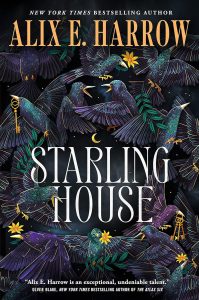Spotlight on Micaela Alcaino

 MICAELA ALCAINO is a book cover designer and illustrator who relocated from her home in Sydney, Australia to London, UK in 2013. Her career has been marked by significant achievements, including being named one of The Bookseller’s Rising Stars in 2021 and winning the prestigious Designer of the Year title at the British Book Awards in 2022, with a subsequent nomination this year in 2024. She was also a finalist for the Hugo Award in 2024 for Best Professional Artist. With more than a decade of professional experience, Micaela spent many years working for both Penguin Random House UK and HarperCollins UK before venturing out as a freelancer in 2019, she has since collaborated on projects with major publishing houses globally. Her portfolio comprises a distinctive fusion of creativity and artistry, influenced by her passion for travel, her diverse cultural heritage, and a deep appreciation for the fine arts.
MICAELA ALCAINO is a book cover designer and illustrator who relocated from her home in Sydney, Australia to London, UK in 2013. Her career has been marked by significant achievements, including being named one of The Bookseller’s Rising Stars in 2021 and winning the prestigious Designer of the Year title at the British Book Awards in 2022, with a subsequent nomination this year in 2024. She was also a finalist for the Hugo Award in 2024 for Best Professional Artist. With more than a decade of professional experience, Micaela spent many years working for both Penguin Random House UK and HarperCollins UK before venturing out as a freelancer in 2019, she has since collaborated on projects with major publishing houses globally. Her portfolio comprises a distinctive fusion of creativity and artistry, influenced by her passion for travel, her diverse cultural heritage, and a deep appreciation for the fine arts.
 Talk a bit about one of your most interesting illustration projects. What’s it like to illustrate an author’s work? How do you engage with the work and make it your own while still honoring the source material?
Talk a bit about one of your most interesting illustration projects. What’s it like to illustrate an author’s work? How do you engage with the work and make it your own while still honoring the source material?
I recently had the incredible opportunity to design new covers for the The Kingkiller Chronicles series by Patrick Rothfuss for Gollancz UK, which was truly a dream come true. This series has been a personal favourite of mine for years, so the chance to bring my vision to these books was both thrilling and slightly daunting. As an artist and designer, I always make it a point to read the source material when working on a book project. But in this case, I was already a huge fan and had read these books many times, which made the process even more special. I knew exactly what elements were important to highlight on the covers, and I allowed myself to create designs that I would love to have on my own bookshelf. I’m a firm believer that reading and understanding the material deeply is key to creating something that not only stays true to the story but also connects with the readers and the market. With these covers, my goal was to capture the essence of The Kingkiller Chronicles while creating something fresh and special.
Striking graphic design is central to your works. What are your favorite principles of design and how do you amp up the visual drama in your work?
Many graphic designers face a common challenge when creating book covers: achieving harmony between a stunning illustration and the accompanying text. Too often, the text is simply placed on top of the illustration, with little to no interaction between the two elements. I tend to get hired for both design and illustrate which allows me to approach these elements together, ensuring they interact as a unified whole. I think understanding this concept allows for a more visually impactful cover. I also keep a Google spreadsheet with hundreds of categorised fonts I’ve collected over time. This helps me avoid using the same few fonts over and over and gives me plenty of options to choose from for each project, keeping things fresh.
 What does your workflow look like from concept to realisation and do you use digital media or hand-drawing or both? Any unusual techniques?
What does your workflow look like from concept to realisation and do you use digital media or hand-drawing or both? Any unusual techniques?
Before diving into any project, my first priority is always to immerse myself in the story as mentioned above. Research is also crucial for unlocking ideas and drawing inspiration. Depending on the complexity of the project, I dedicate 1-2 days solely to researching the story’s era, atmosphere, and details. I find Pinterest especially useful for gathering and organising my thoughts by creating private boards for each project to easily reference my research as I progress. I then move on to the conceptual phase, which often begins with a laughable collection of hand-drawn squiggles – notes and sketches that probably only make sense to me. These rough doodles help me quickly capture ideas that I can refine later. Once I have a concept in mind, I start by placing the title on a blank canvas in Photoshop. This allows me to gauge how much space I have to work with for the illustration. The title length plays a big role in this stage; some books have long, elaborate titles, while others are just a single word. The title, along with the author’s name, significantly influences my approach to the layout and illustration. For instance, I once worked on a book called Hannah Green and Her Unfeasibly Mundane Existence by Michael Marshall Smith. Figuring out how to integrate that lengthy title with the illustration was quite a challenge!
 How do you keep it fresh for yourself and keep learning new techniques and improving your craft? Have there been any recent changes or discoveries in your art process, or do you feel settled into something that’s really working for you already?
How do you keep it fresh for yourself and keep learning new techniques and improving your craft? Have there been any recent changes or discoveries in your art process, or do you feel settled into something that’s really working for you already?
I’m always striving to evolve and refine my craft. When someone comes to me with a project that challenges me to try something new, I’m eager to find a way to fit it into my schedule. Expanding my range of illustration styles is a priority for me because it enhances my value as a book cover designer and illustrator. In this field, versatility is key – it allows me to adapt to the unique demands of each project. I’m also constantly seeking fresh ways to spark creativity and draw inspiration, which is one of the reasons I love traveling. It exposes me to different cultures, from street art to museums to graphic design, offering endless visual inspiration.
–Micaela Alcaino
 While you are here, please take a moment to support Locus with a one-time or recurring donation. We rely on reader donations to keep the magazine and site going, and would like to keep the site paywall free, but WE NEED YOUR FINANCIAL SUPPORT to continue quality coverage of the science fiction and fantasy field.
While you are here, please take a moment to support Locus with a one-time or recurring donation. We rely on reader donations to keep the magazine and site going, and would like to keep the site paywall free, but WE NEED YOUR FINANCIAL SUPPORT to continue quality coverage of the science fiction and fantasy field.
©Locus Magazine. Copyrighted material may not be republished without permission of LSFF.







